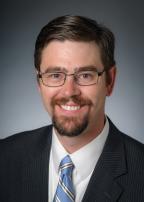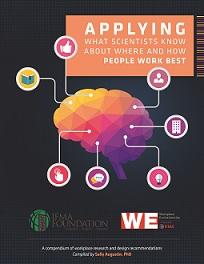
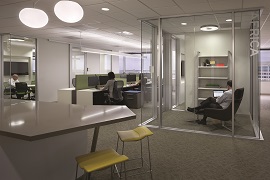
The breadth of the conversation is evident in editorial pages, business sections and news items in newspapers, magazines and television. Subjects range from workplace strategy to sustainability and disaster preparation and business continuity to worker safety and well-being, but regardless of the specific subject, what is evident is that business owners and executives are looking to the built environment to help solve problems and contribute to organizational goals. They expect facilities to help increase productivity, reduce environmental impact and provide employees with a clean and secure place to work.
And, all too often, the conversations become polarized with each side arguing their approach is the only way to go. It’s often tempting to oversimplify facilities management by making blanket statement about what works and what doesn’t. But as with most things, the reality is a little more complex than a simple pro-con debate. Would you claim that a hammer is useless just because it isn’t very good at turning a screw?
The Role of Facility Management
The reality is that each organization is unique, with its own set of challenges and opportunities; it is simply not feasible to create one-size-fits-all-solutions. One organization may want to promote creative collaboration between departments, in which case an open layout might make more sense than the closed office designs that would work for a legal office seeking to protect client privacy.
With this in mind, the first question should almost never be what kind of facility one should have. The first question ought to be about what one wants to accomplish. The answer to that question will provide useful guidance for facility strategies.
All of this is simply to say, the built environment is best treated like a tool. Like any tool, its effectiveness depends not only on the job for which it is being used, but the people who are wielding it. As the expectations for the built environment have increased, the pivotal role of the facility management professional to operate and maintain it has grown in kind.
There are few simple answers and virtually no universal rules in the facility management industry. Challenges are situational, goals are varied and solutions require ingenuity and experience. The role played by facility management professionals is growing more strategic with every passing month.
As the world’s largest and most widely, globally recognized professional association for facility management professionals, the International Facility Management Association (IFMA) provides facility management (FM) professionals with the support they need. As such, FM professionals look to IFMA for the information and professional development they need to master the tools at their disposal.
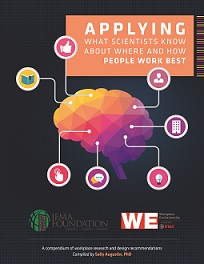 The Science of Facility Management
The Science of Facility Management
Facility management strategy doesn’t need to be like reading tea leaves. The questions most organizations are asking aren’t unprecedented. In fact, many of them are the subject of extensive empirical scientific research.
The Workplace Evolutionaries (WE) are a community of practice within IFMA. They are a vibrant group of facility experts who are both informing contemporary debates about workplace strategy and setting the stage for the workplace of the future.
In association with the IFMA Foundation, WE recently published a comprehensive research-based paper that demystifies modern workplace strategies with scientific data, analysis and research. “Applying What Scientists Know About WHERE and HOW People Work Best,” by Dr. Sally Augustin, PhD outlines hundreds of scientific workplace strategy guidelines, each supported with complete citations.
The research paper is a must-have resource for anyone looking for ways to harness the power of the built environment. It was the product of Workplace Strategy Summits, industry polls and surveys and a remarkable amount of expertise derived from first-hand experience. Among the 50-plus pages and hundreds of useful facts are items like these:
Research indicates that people think more creatively when ceilings are 10 feet high than when they are 8 feet tall.
Joan Meyers-Levy and Rui Zhu. 2007. “The Influence of Ceiling Height: The Effect of Priming on the Type of Processing People Use.” Journal of Consumer Research, vol. 34, no. 2, pp. 174-186.
http://assets.csom.umn.edu/assets/71190.pdf
People are significantly more like to collaborate when there is a 100-foot increase in the overlap of their functional paths. Functional paths are the routes people travel at their workplace, getting their job done. A press release related to this project indicates that the increases in collaboration were 20 percent for each 100-foot increase.
Felichism Kabo, Yongha Hwang, Margaret Levenstein and Jason Owen-Smith. “Shared Paths to the Lab: A Sociospatial Network Analysis of Collaboration.” Environment and Behavior, in press.
http://eab.sagepub.com/content/early/2013/07/20/0013916513493909.abstract
The full report is available for download in the IFMA bookstore, online at: http://www.ifma.org/marketplace/store/product-view/applying-what-scientists-know-about-where-and-how-people-work-best
The science that goes into the workplace strategy is but one representative example of the impact strategic facility management can have in helping to achieve organizational goals. There are similar guidelines for a huge variety of options surrounding the built environment. It’s not hard to see why modern facility management professionals find themselves engaging the C-suite to help craft and achieve high-level strategy.
The Application of Facility Management
Like any tools, facilities are only as powerful as the men and women who are using them. The modern built environment is growing more complex. Smart buildings, building information modeling (BIM), sustainable technologies and life cycle maintenance are all things that require a highly trained person to utilize.
The most high-tech building is little more than a container if it’s not managed by someone who knows how to run it. In fact, a frightening number of buildings with sustainable technology integrated into the design are not achieving the expected environmental benefits because the people responsible for maintaining them lack adequate training. The U.S. Government Accountability Office (GAO) identified the failure to consider the people responsible for operating federal facilities as one of the reasons for failing to meet energy management goals (GAO 10-22).
One of the challenges is that facility management professionals come from a huge variety of backgrounds. Many were never formally trained in facility management. To account for this fact, more hiring executives and human relations departments are looking for independent third-party validation of facility management skills. Even the U.S. federal government, the single largest property owner in the world, passed the Federal Building Personnel Training Act, requiring federal facility management professionals to demonstrate proficiency in specific job-related skills.
As a result, thousands of facility management professionals around the world are earning professional credentials. This includes IFMA’s world-class facility management credential program which has earned accreditation and seven commendations from the American National Standards Institute (ANSI). ANSI, which oversees thousands of standards and guidelines that directly impact businesses in a range of sectors, accredited IFMA for the Facility Management Professional (FMP®) and Sustainability Facility Professional® (SFP®). Both the FMP and SFP programs were described as “world-class, gold-standard models of learning and development.”
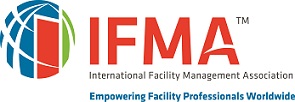 Conclusion
Conclusion
Modern technology has made the built environment a labyrinth of exciting opportunities, dangerous pitfalls and undiscovered frontiers. To navigate this labyrinth, executives and property owners are looking for facility management professionals to serve as guides.
Rather than seeking to adopt one-size-fits-all solutions for facility management, companies should make strategic decisions on a case-by-case basis. A well-trained and knowledgeable facility management professional can utilize the wealth of information from science and experience to create a competitive advantage for his or her organization.

